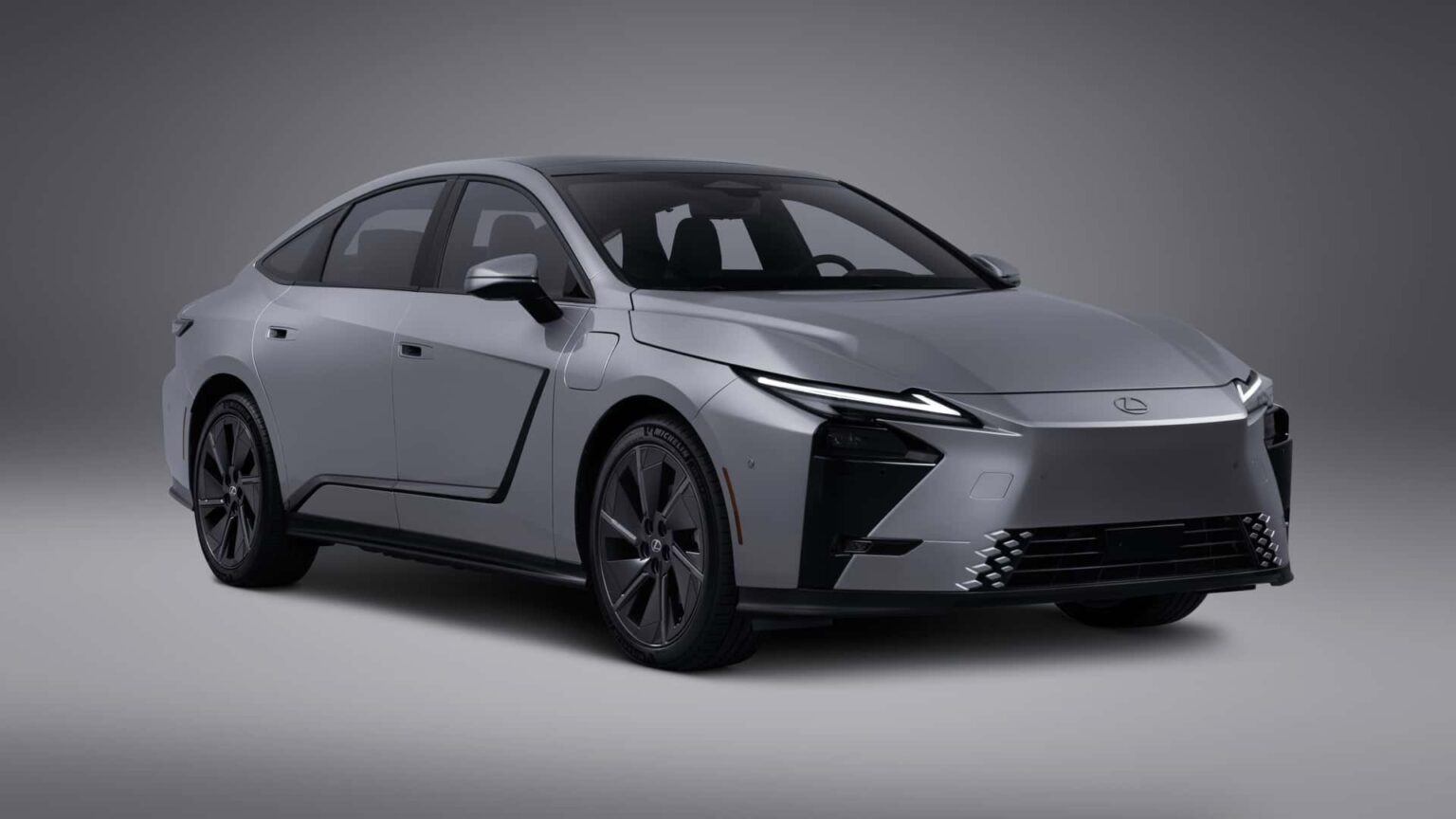Although the outgoing ES received two facelifts, it couldn’t hide the fact that it was getting long in the tooth. Lexus introduced the seventh-generation model back in 2018, so it was definitely time for a full redesign. Thankfully, the wait is over. Debuting this week at Auto Shanghai, the all-new 2026 ES brings major updates both inside and out.
If the sharp styling looks familiar, there’s a good reason. The new ES draws inspiration from the LF-ZL concept unveiled about a year and a half ago. While the production version tones things down somewhat, the design remains a bold departure from the model it replaces. We’re happy to see the oversized grille finally gone, although the heavily sculpted profile, with its thick gloss-black trim extending across the doors, might be a bit polarizing.
Photo by: Lexus
There’s also a charging port on the front fender, signaling the arrival of a fully electric ES, which will be sold alongside the familiar hybrid. Out back, the taillights have been reimagined: the lower-mounted “L”-shaped elements now house the turn signals, while the reverse lights sit below, and a fog light is mounted on one side. The classic badge has been replaced with large Lexus lettering across the upper light bar.
Inside, the changes are just as dramatic. The cabin has embraced a minimalist design, trading traditional buttons for a simplified layout. A 12.3-inch digital instrument cluster and a 14-inch infotainment touchscreen dominate the dash. Select versions even offer a passenger-side screen, which is likely optional, depending on the market.
The steering wheel now features embossed “Lexus” branding instead of the usual badge, and the old gear lever has been replaced by a more compact selector. A few touch-sensitive shortcut keys remain below the infotainment, plus an old-school volume dial for ease of use. Elsewhere, a panoramic glass roof dims at the touch of a button. For those riding in the back, there are massaging seats and a dedicated climate control panel built into the center armrest.

Photo by: Lexus
Gone is the old-school luxury feel of the previous ES, especially since Lexus is now offering a wild bamboo-colored interior finish. On the same note, the instrument panel utilizes a 3D printing technique to mimic the appearance of bamboo, while the elegant illumination embedded in the door cards is a first for Toyota’s luxury brand.
The new ES is significantly larger than its predecessor, growing by 6.5 inches (165 millimeters) to a total length of 202.3 inches (5140 mm). About half of the stretch is found in the wheelbase, which now measures 116.1 inches (2950 mm), an increase of 3.1 in (80 mm). It’s also 2.1 inches (55 mm) wider than before, at 75.6 inches (1920 mm). Despite growing, the ES is not replacing the LS. Lexus tells us it’s keeping the flagship sedan.
In terms of height, the hybrid stands 4.3 inches (110 mm) taller than its predecessor, at 61.2 inches (1,555 mm), while the electric version adds an additional 0.2 inches (5 mm). Weight ranges from 3,935 pounds (1,785 kg) for the front-wheel-drive ES 300h to 5,037 lbs (2,285 kg) for the all-wheel-drive electric ES 500e.

103
Source: Lexus
Lexus is offering the new ES with two hybrid powertrain options based on 2.0- and 2.5-liter engines. However, the lesser of the two is strictly front-wheel drive and won’t be sold in the United States. America is getting the ES 350h with a choice between FWD and AWD. Total system output varies from 194 hp for the electrified 2.0-liter powertrain to 244 hp with the bigger engine. The slowest of the bunch takes 9.4 seconds to reach 62 mph (100 km/h), whereas the quickest needs 7.8 seconds.
The fully electric model comes in front-wheel-drive ES 350e and all-wheel-drive ES 500e flavors. Stick to the cheaper EV and you get 221 hp, good for an 8.9-second sprint and a maximum range of 426 miles (685 kilometers). However, the range mentioned by Lexus is in the overly optimistic CLTC cycle. Lexus estimates the US-spec version will cover 300 miles (483 kilometers) on a charge. The dual-motor variant ups the power ante to 338 hp and cuts the sprint time to only 5.9 seconds. Because it’s a heavier car, the range takes a hit, falling to 379 miles (610 kilometers) per CLTC.
We should also note that the new ES features all-wheel steering, which allows the rear wheels to turn up to four degrees in the opposite direction of the front wheels at lower speeds and in the same direction at higher speeds. Perhaps even more important is the implementation of a multi-link rear suspension for improved ride quality. Lexus claims to have beefed up body rigidity by utilizing the latest iteration of Toyota’s TNGA GA-K platform. Wheel sizes vary from 18 to 21 inches, but the larger ones will impact the range delivered by the electric versions. The numbers quoted by the company are for cars fitted with 19-inch alloys.
Despite today’s world premiere, the next-gen Lexus ES won’t go on sale until the middle of 2026.
Read the full article here



